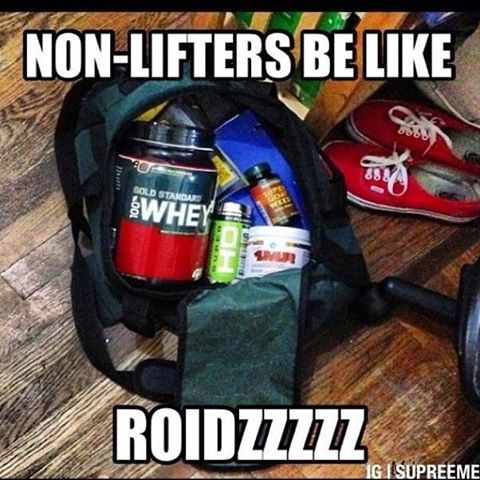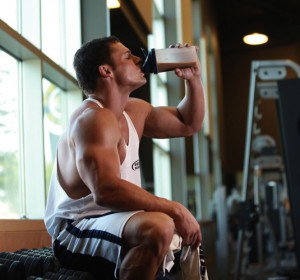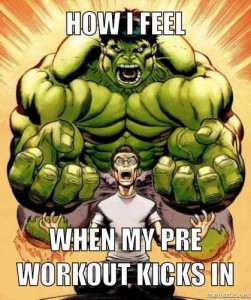Eating for the Bodybuilding Physique
Here's how you can benefit from some old-school eating habits.

They say we are what we eat. Never a truer word has been spoken and you can look around and pretty much tell who eats right and who doesn’t. I look at today’s society and see obesity all around me starting with the kids right on up to the adults. TV reality shows are all popping up now with those like ‘The Biggest Loser’, Jillian Michael’s ‘Losing It’ and specials on obesity and diabetes.
I don’t remember seeing this much coverage on weight in the 70’s as it wasn’t as big a problem then or at least it wasn’t in the media. Today more people are on the run and want to eat quick so they pick those items that are full of sugars and fats and don’t stop to analyze what’s in it and what it will do to them. Some gain 100 lbs in no time and don’t even realize it until it’s there. Then they’re on to their 2nd 100 lbs.
When I was in school, we had cafeterias that took pride in their meals and were cooked by little old ladies in the back. Each meal was balanced and came with a lot of flavor as well. Today’s schools package meals and stick them in vending machines for the kids. It’s a no thought process.
I started my 70’s diet in the 60’s so you might say I was ahead of my time. But, I got most my information out of reading muscle magazines, which the average person would never read and even laugh at me for doing it. These articles began my structure to eat right and get results in my body.
The main diet for bodybuilding in the 70’s was high protein and low carb. It was Protein to build the muscle and less carb to reduce body fat. It made perfect sense to me and the others that trained. However when you would try to explain this to someone on the street, it would be an argument about how they liked to eat all the other foods. This wasn’t a case of like or dislike, but we would eat for results even if we didn’t like the food.

2.This diet started way back maybe even beyond the 50’s but I do remember in 1967 many of the bodybuilders on the beach drinking quart containers of extra rich milk or even cream. Some would go to restaurants and drink the cream right out of the containers on the tables. This was pretty extreme but they did it. The reason for this was of course the extra protein and the fat content for energy, which I’ll get into later in this article.
Supplements were just breaking ground around then and the main things to take were liver pills that were extreme in building stomach gases and Soy protein, which really didn’t work that well. Some of us would add powdered milk to our regular milk just to get more protein. I would also see protein cans on the shelves in stores but the spelling was PROTEEN. I was never sure what was in that so I didn’t try it. But, I did use dehydrated fish powder as it was considered pure protein. I wasn’t easily digested and tasted like vomit but it did have its value.
We depended most on ‘real’ foods such as the diet below and this was very basic.
Breakfast - Beef patty and 3 eggs, cottage cheese and vitamins.
Lunch - Chicken or Fish, or Beef patty, small salad, option eggs and cottage cheese. Or Tuna.
Mid afternoon snack – Can of Tuna or chicken breasts or protein drink.
Dinner -Steak, or Chicken with small salad, cottage cheese and sugar free jello and vegetables.
Bedtime – Cheese omelet
This was considered high protein, low carbohydrate and the fats came from eggs and cheese and for some of the other people, extra rich milk or cream. In fact we were supposed to mix our protein with cream which was the Rheo H. Blair theory.

Rheo had his own supplements which were expensive but were deemed to get results for bodybuilders like Larry Scott and Don Howarth to name a couple.
Fats were used to burn as energy in the gym and would not be stored on the body as fat whereas carbohydrates are stored as fat and burned later. You would need a certain amount of calories to burn and the fat would increase those. But, going without carbs for long periods of time can deplete your body and your brain and can make you very angry.
You do need some sugar and one day a week it was ok to go off the diet and have a junk day. This day to many was usually Sundays were we could eat anything we wanted all day long. The belief in that was you cannot get fat in one day. Everything you eat will pass right through and not stick, but it will retain water so by Monday you could be up in weight 5 lbs. or more and back to normal by Wednesday.
We always looked forward to Sundays, as many of us would down whole pizzas, half gallons of ice cream, cookies, cheesecakes, spaghetti and meatballs and just about any sugar we could find. I even went as far as to suck out the cookie crumbs from the empty box. It was an uncontrollable craving that was not really healthy at all.
I remember crawling away from the dinner table at night so bloated that I could hardly walk. This was the case of many but then right back on the diet the next day.

Many of us would eat at ‘smorgys’, all you can eat places in fact the sign said, “all you can eat.” We’d eat as much as 12 pieces of chicken in one sitting just to get the protein. Some of the guys would bring in their gym bags and tin foil and sneak out another dozen chicken breasts for later. Soon the management was losing money and discouraged all bodybuilders from coming in and changed the sign to ‘the best you can eat.”
In today’s world we are asked to watch our fats because of heart and artery problems and cholesterol build up. This makes a lot of sense and I do believe that everything should be done in moderation.
Fad diets came along later in the 70s like the Atkin’s diet, Zone diet which were complete knockoffs of our bodybuilding diet. I tried to explain this diet to several people back then but they felt more convinced by reading about it when it became the Aitkin’s diet. I guess they didn’t think that we as bodybuilders knew much.
I think some of the biggest issues with this diet were mood swings from feeling starved from carbohydrates and also elimination because of the high protein and no bulk. The mood swings could be reversed by a little sugar and the elimination was balanced out by taking a form of fiber at least once to twice a day.
On a diet like this, you can get very lean and muscular in a short period of time but, if you reverse it and go back to eating carbs, your body will tend to get heavy and blow up way beyond where you were when you started. Fat cells don’t disappear, but instead shrink in size, so when you feed them again, they blow up to original size and bigger.
I’ve found that over the years, it’s best to do this in moderation. No more junk days but instead a little carbs every few days. I don’t get fat and can stay hard plus keep my sanity as well. I don’t eat a lot and space my meals just as I did back then. If I feel a pound or two start to come on, then I’ll cut back even more but always try to maintain where I look good in the mirror. The scale doesn’t tell the truth, because you can lose weight and still look fat, but the mirror doesn’t lie.






